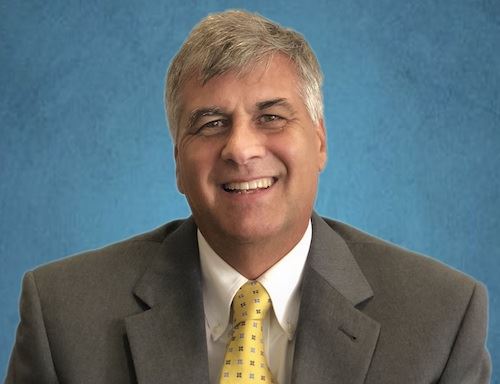Part 2 - By Steve Dwyer
An active participant on Montrose Environmental’s Emerging Contaminants Team (MECT), 2020 BCONE President Rich Shoyer’s experiences focus on a variety of treatment technologies, including advanced oxidation, for the remediation of emerging contaminants. The current focus has been with per and polyfluorinated alkyl substances (PFAS), 1,4-Dioxane, and 1,23-Trichlorpropane.
 Shoyer, long time BCONE member and champion of BCONE’s biggest event, the annual NSCW, joined the BCONE Board in 2020 after serving on the Advisory Council for over seven years. Shoyer provides environmental technical assistance to a city in New York State whose drinking water supply has been impacted by PFAS. Specific experience has included characterization of surface water supplies; GAC, anion exchange resins and advanced oxidation PFAS removal performance effectiveness; and fate and transport assessments of source releases.
Shoyer, long time BCONE member and champion of BCONE’s biggest event, the annual NSCW, joined the BCONE Board in 2020 after serving on the Advisory Council for over seven years. Shoyer provides environmental technical assistance to a city in New York State whose drinking water supply has been impacted by PFAS. Specific experience has included characterization of surface water supplies; GAC, anion exchange resins and advanced oxidation PFAS removal performance effectiveness; and fate and transport assessments of source releases.
He has also performed extensive research on the various aqueous film forming foams (AFFFs), one major contributor of PFAS being released into the environment, and alternative fluorine free foams (FFFs). Shoyer has presented at various forums on PFAS and other emerging contaminants.
Q: Can you discuss the per- and poly-fluoroalkyl substances (PFAS) conversation and how it impacts/will impact BCONE?
A: Public opinion is driving PFAS regulation: the opinion is that PFAS at any level is harmful to humans and the environment. The federal government is not moving fast enough to establish MCLs, and so the states are individually making their own standards. The emphasis was on two specific PFAS compounds—PFOA and PFOS for drinking water. States are expanding limits for more PFAS substances and to additional media soils, sediment, groundwater and surface water. It seems like each state that proposes new standards tries to outdo the state before them with more compounds and lower standards. There over 3,000 PFAS compounds, and though they all have in common this extremely strong chemical bond between carbon and fluorine, they are, in fact, very complex and different substances within the PFAS group. The complexity of these compounds, the uniqueness, the ever-changing standards and addition of new PFAS substances being regulated has affected brownfield redevelopment of suspected sites.
Insurance coverage that once may have provided coverage for PFAS as unknowns is often excluded. However, some positives with PFAS is that they are not volatile, so vapor mitigation is not an issue and they, for the most part, do not adhere to soils and sediment. The focus is generally on water bodies, groundwater and drinking water sources.
We had a great panel discussion at BCONE’s NSCW virtual conference, held July 21 and 22, 20220. The panel was Legal and Technical Impacts of New PFAS Sampling Methodologies on Older Data and Site Remediation, and it specifically targeted brownfields and PFAS. We’ll be releasing information from that panel and all other NSCW 2020 panels to our membership in the upcoming weeks.
Q: Can you discuss the BCONE “report card” around the ongoing investment in renewable energy projects, starting with the emerging community solar project opportunity and others?
A: BCONE supports sustainable and resilient development (and redevelopment). Community solar projects can fall into this category. We encourage community solar projects to expand into the urban areas, economically distressed areas, and low-income housing, etc., where these businesses and residence can take advantage economically of the solar programs.
Q: Can you talk about the balance needed between renewables and fossil fuels?
A: Technology advancements and economic affordability are key ingredients for renewable energy investments to be truly resilient and sustainable. A true realistic balance is needed, but that may not be completely in-line with more vociferous public opinions. We are blessed with many abundant energy sources (solar, wind, natural gas, petroleum and nuclear, hydroelectric, and more) and we should use them wisely.
The infrastructure to generate, store and transport the energy power to the consumer is a major engineering challenge and cost consideration. The infrastructure required to store and transmit power generated from wind and solar needs to be routed through many ecologically sensitive areas (shore lines, marshes, wetlands, pinelands)—the same areas that many environmental activists are arguing other utility corridors should not disturb. The energy system needs to accommodate peak demands. Reliable alternative backup systems need to be in place for when the wind is not blowing and the sun is not shining. Solar panels have a life expectancy of less than 25 to 30 years, and many of the solar panels installed today will need to be replaced by 2050. You now may be surprised that I have a large solar system on my home.
Q: What is the overall state of the renewable investment process and how it’s been championed over past 5 years?
A: I have heard opinions from both sides applauding and criticizing the long and short terms pros and cons of the programs. At times government needs to steer and incentivize the public, private industries and technology to make improvements that will be a long-term benefit for all. These are dialogues we are having with BCONE Board and Advisory Council members and plan to have with our membership down the road.

